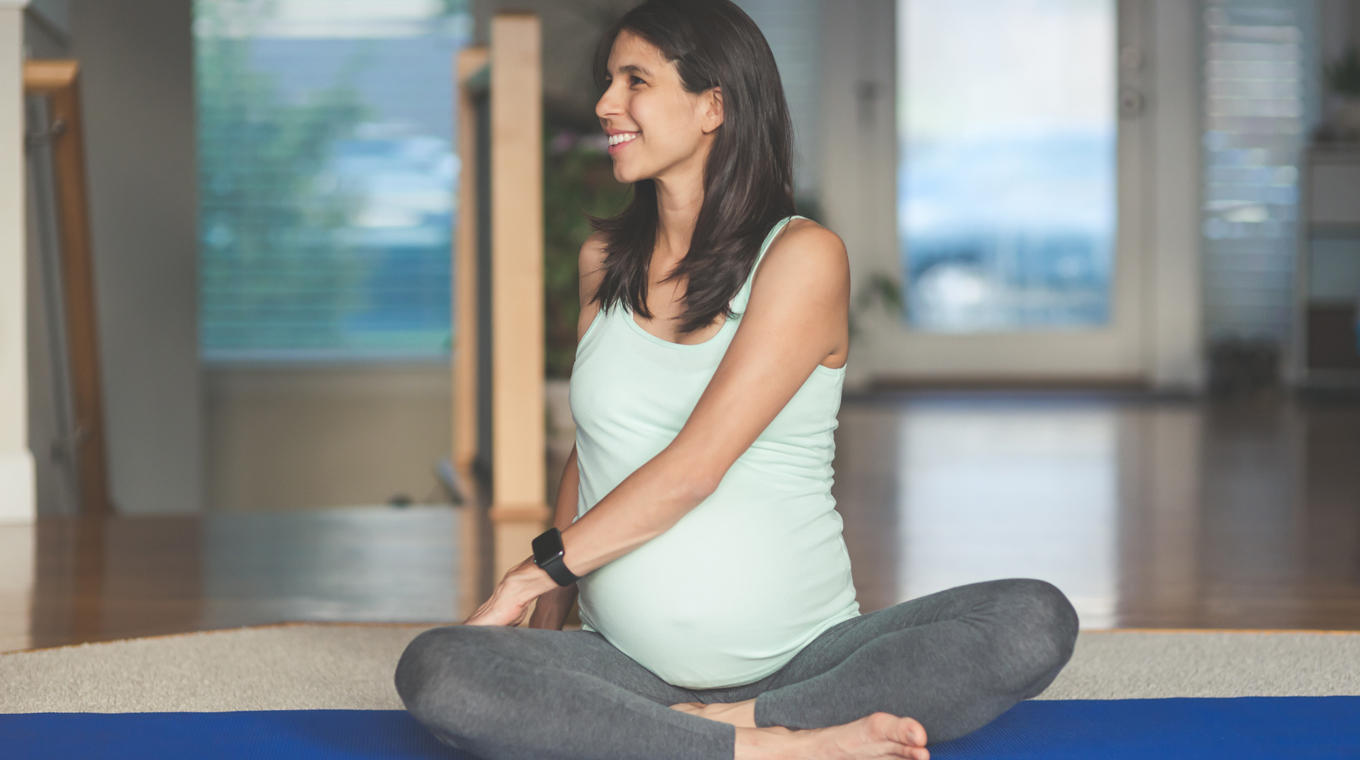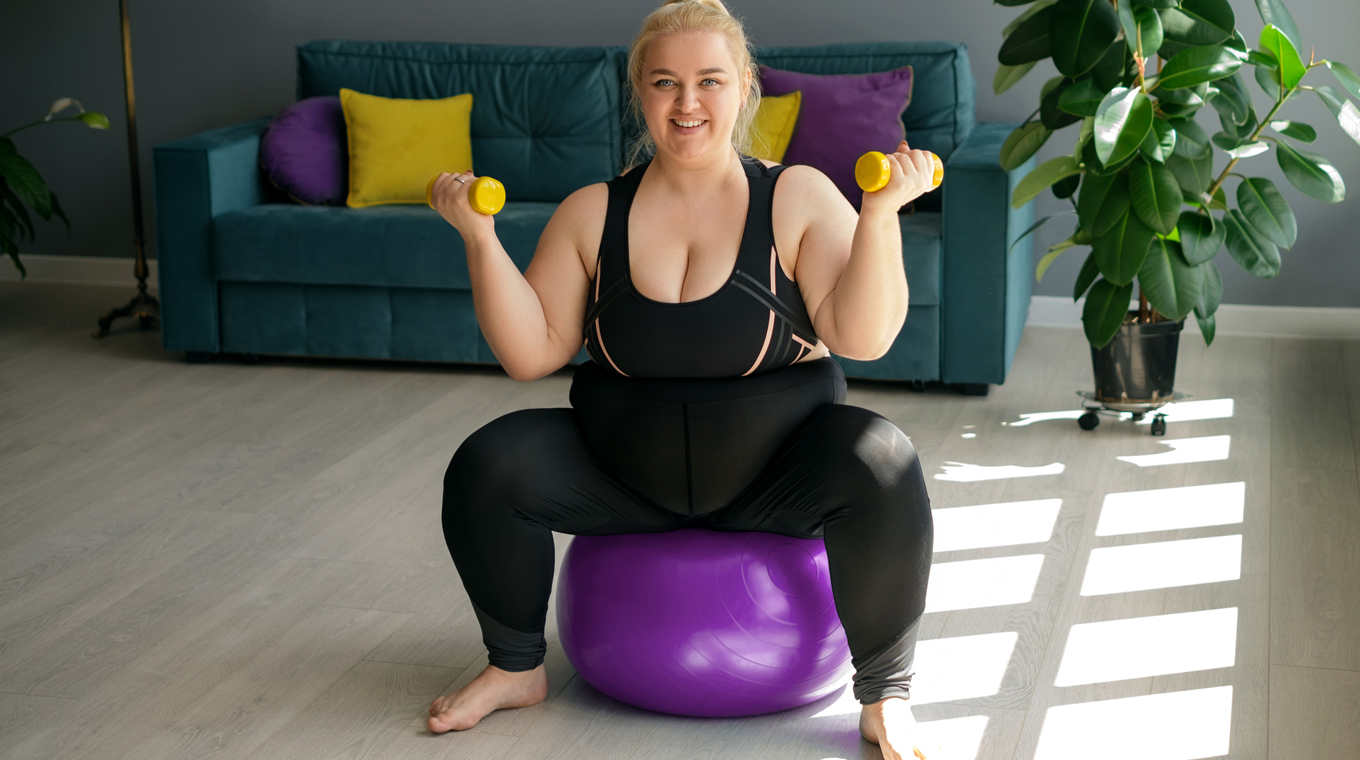In this article
Years ago, expectant moms were encouraged to rest — a lot. Today, we know that healthy moms can and should exercise throughout pregnancy. Pregnancy exercise is a must
It doesn’t matter what type of birth you intend to have; your muscles, joints, and tissues become challenged by the rapid changes that occur during the year of pregnancy. Getting prepared for these changes both physically and emotionally is essential. You can do this by incorporating a regular, safe, and comprehensive exercise program into your life.
“Pregnancy is not a medical condition. It’s a phase of life that requires strength, endurance, and physical exertion,” Rachel MacPherson, a prenatal certified exercise specialist and trainer, explained to Mom.com. “It’s highly beneficial for women to stay active during pregnancy by strength training, moving their bodies in a way they enjoy, and participating in cardiovascular activities unless their doctor has told them otherwise.”
Why pregnancy exercise is beneficial

Moderate intensity exercise in a healthy pregnancy is so important for both the well-being of the mother and the growing baby. Regular exercise during pregnancy is associated with a reduced risk of preeclampsia, gestational diabetes, and preterm birth. Additionally, women experience reduced pregnancy-related discomforts, such as back pain and water retention, while having increased energy, stamina, and muscle control for an easier pregnancy and a faster and less painful delivery.
How to exercise: Pregnancy general recommendations

The Centers for Disease Control and Prevention (CDC) and the American College of Sports Medicine recommend that in the absence of medical or obstetric complications, pregnant women should engage in 150 or more minutes of moderate exercise per week. This is doing something for 30 minutes a day for five days a week.
There isn’t a one-size-fits-all exercise program. When choosing an exercise program, consider your interests and personal situation. Every woman is unique — her body, mental state, career, family, prior exercise experience, physical and medical limitations, and likes or dislikes. In order for an exercise program to be effective and sustainable for a woman, it should be tailored specifically for her.
Note: While most women can exercise safely during pregnancy, it’s important to check with your doctor before starting any type of exercise program.
Exercises
Your exercise program should incorporate aerobic exercise, strengthening, stretching, and relaxation/breathing. Each of these elements does something different for your body and mind, and they work together to keep you healthy and strong. In the postpartum period, take the time to strengthen your core (pelvic floor, abs, back) before starting a more vigorous exercise program.
To be more specific, you can try vigorous walking. Finding a hill can be especially beneficial. You can also try biking, elliptical, treadmill, and swimming. Any activity that can raise the heart rate to about 70 percent heart rate max (around 130 to 140 beats per minute) and keep it raised for 30 minutes should be encouraged.
Start slowly, especially if you haven’t been exercising, and don’t exercise to the point of exhaustion. Take frequent breaks and consult your doctor when in doubt.
Precautions
You probably know that skiing, water skiing, and snowboarding are off the table during pregnancy. Horseback riding also carries risks. Obviously, activities that could cause trauma to the baby, like contact sports, should be discouraged.
Any sport that promotes a large uneven weight bearing through one leg, like kickboxing or deep lunges, should not be performed in pregnancy. Avoid hiking or walking on uneven terrain late in pregnancy, when your balance is off, and don’t do exercises that require you to lie flat on your back.
Finally, if something doesn’t feel good, stop. Always, always, listen to your body. Pregnancy is not the time to ignore pain or discomfort when exercising. “When I got pregnant, I kept doing what I was already doing, yoga and Pilates. I had to modify certain poses and moves as I was getting bigger,” mom and yoga instructor, Lauren Vestal explained to Mom.com.
Most importantly, consult your doctor immediately if you experience preterm labor, bleeding, vaginal leaking, or decreased fetal movement.
Exercise tips for success

Finding the motivation to exercise during pregnancy can be hard. Early on, you may be dealing with fatigue and nausea. Late in pregnancy, your growing tummy can make exercise awkward. But keep at it. Even 10 minutes can make a big difference, and the benefits are worth the extra trouble.
Women who exercise during and after pregnancy have a lower incidence of postpartum depression, improved abdominal muscle tone, and improved ability to lose both weight and fat gained during pregnancy. Babies of mothers who exercise regularly during pregnancy are more likely to be healthy and calm with improved neurological development.
To maximize comfort, wear a supportive bra and shoes. Drink plenty of water before, during, and after exercise. Eat a healthy snack an hour or two before you exercise and adjust your exercise throughout pregnancy. Remember to listen to your body and adjust accordingly — maybe you ran five miles every day before you were pregnant, but if running doesn’t feel good, switch to a brisk walk instead.




